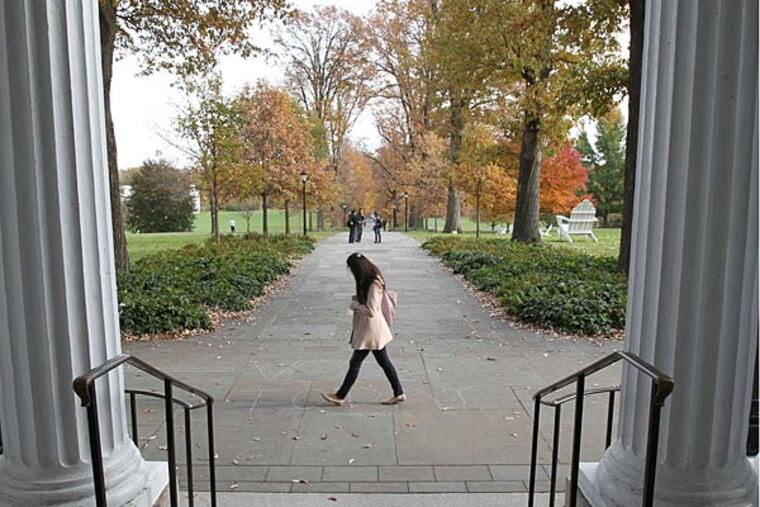College presidents write of liberal arts' value
As higher education comes under increased pressure to prove its worth, two local college presidents argue in a new book that the liberal arts play a vital role in educating the world's leaders and problem-solvers.

As higher education comes under increased pressure to prove its worth, two local college presidents argue in a new book that the liberal arts play a vital role in educating the world's leaders and problem-solvers.
While many colleges are aimed at preparing students for a profession or career, liberal arts colleges develop critical thinkers who are able to cross disciplines, said Daniel H. Weiss, president of Haverford College, one of the nation's most highly selective and expensive small liberal arts colleges.
"We help people get all the jobs and follow the path of a rewarding and interesting life that contributes to society," said Weiss, who wrote and coedited the collection of essays with Rebecca Chopp, president of Swarthmore College, and Susan Frost, an educational consultant.
The book comes as colleges are preparing to face a new accountability and ratings system still in development by the Obama administration and due out in 2015.
In Remaking College, the two presidents assert that higher education will have to address spiraling costs and that some colleges - particularly regional liberal arts colleges - will have trouble surviving if they don't.
Colleges need to - and are - looking at doing things differently, Weiss and Chopp write. Among the innovations: Exploring different uses for their facilities; offering summer sessions to allow students to complete their degrees in three years; offering courses that are a hybrid of online and in-class instruction; and collaborating on programs and services.
Haverford, Bryn Mawr College, and Swarthmore have long collaborated. They share libraries and administrative services, started a joint linguistics department, and more recently began working together on environmental sciences and environmental studies, Chopp said.
In the last year, the three colleges have joined a consortium of nine liberal arts colleges in Pennsylvania that meets "to talk about how we can collaborate to cut costs while providing new support for faculty and students," Chopp said. Other colleges involved in the effort are Washington and Jefferson; Gettysburg; Ursinus; Franklin and Marshall; Juniata; and Dickinson.
"We want to lower cost while protecting and even enhancing value," Chopp said. "That is very much the mood right now within our schools."
Weiss and Chopp decided to work together on the book after hosting a conference on the future of liberal arts colleges in April 2012 at Lafayette College, which Weiss formerly led. Both will discuss the book at 11 a.m. Tuesday on Radio Times With Marty Moss-Coane on WHYY-FM.
The book is a collection of essays by 20 former and current college presidents, and includes lead chapters by Chopp and Weiss. The two presidents discuss the role of small liberal arts colleges, which collectively educate 6 percent of students in higher education. Swarthmore also is home to a special institute aimed at enhancing and fostering liberal arts education worldwide.
In an interview, Chopp and Weiss defended the cost of attending their institutions. Haverford's costs likely will top $60,000 next year. The college currently charges $59,236 in tuition and room and board. Swarthmore charges $57,870.
The presidents emphasized that most students do not pay full tuition. Both schools offer financial aid to students based on need.
"There's no question. We have to do something about cost," Weiss said. "We have to control the tuition increases as much as we can. But we must also acknowledge that quality requires an investment."
Both emphasized the return on investment: Chopp noted that 96 percent of Swarthmore alumni are employed. Weiss said Haverford boasts a similar employment rate.
"We need a cadre of people that can take this breadth of knowledge and critical and creative thinking, and connect them to the issues of the day," Chopp said. "Our graduates will get jobs in these critical and creative fields."
215-854-4693 @ssnyderinq